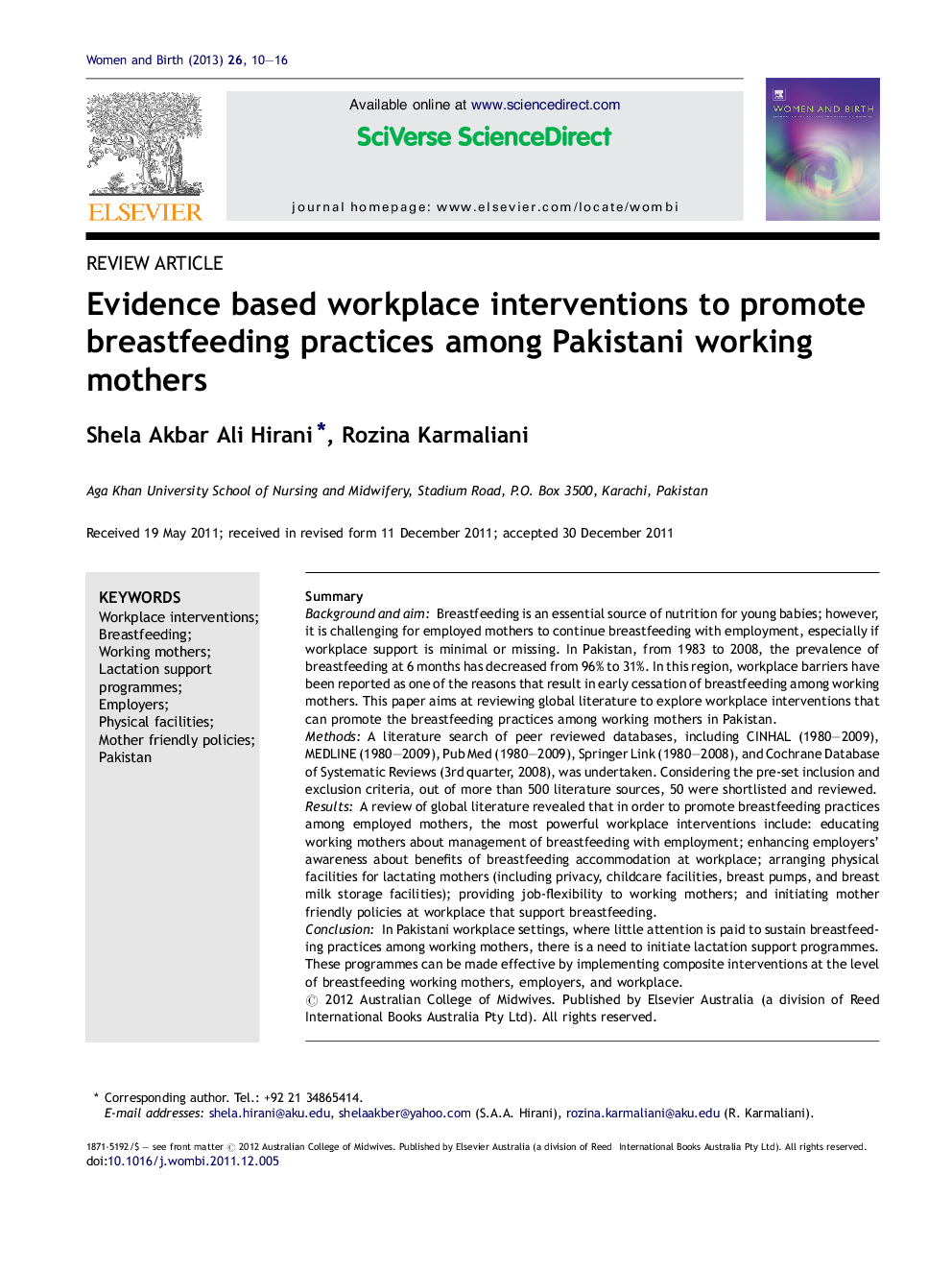| Article ID | Journal | Published Year | Pages | File Type |
|---|---|---|---|---|
| 2636070 | Women and Birth | 2013 | 7 Pages |
SummaryBackground and aimBreastfeeding is an essential source of nutrition for young babies; however, it is challenging for employed mothers to continue breastfeeding with employment, especially if workplace support is minimal or missing. In Pakistan, from 1983 to 2008, the prevalence of breastfeeding at 6 months has decreased from 96% to 31%. In this region, workplace barriers have been reported as one of the reasons that result in early cessation of breastfeeding among working mothers. This paper aims at reviewing global literature to explore workplace interventions that can promote the breastfeeding practices among working mothers in Pakistan.MethodsA literature search of peer reviewed databases, including CINHAL (1980–2009), MEDLINE (1980–2009), Pub Med (1980–2009), Springer Link (1980–2008), and Cochrane Database of Systematic Reviews (3rd quarter, 2008), was undertaken. Considering the pre-set inclusion and exclusion criteria, out of more than 500 literature sources, 50 were shortlisted and reviewed.ResultsA review of global literature revealed that in order to promote breastfeeding practices among employed mothers, the most powerful workplace interventions include: educating working mothers about management of breastfeeding with employment; enhancing employers’ awareness about benefits of breastfeeding accommodation at workplace; arranging physical facilities for lactating mothers (including privacy, childcare facilities, breast pumps, and breast milk storage facilities); providing job-flexibility to working mothers; and initiating mother friendly policies at workplace that support breastfeeding.ConclusionIn Pakistani workplace settings, where little attention is paid to sustain breastfeeding practices among working mothers, there is a need to initiate lactation support programmes. These programmes can be made effective by implementing composite interventions at the level of breastfeeding working mothers, employers, and workplace.
